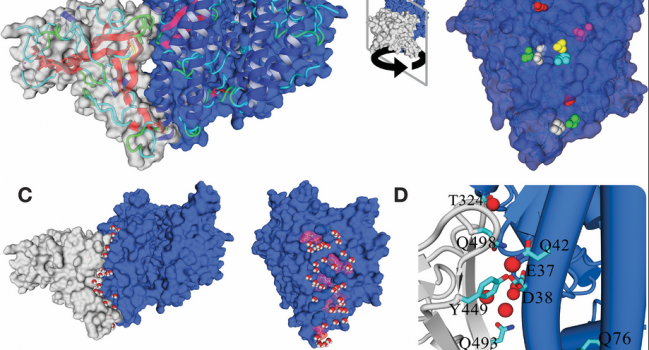Abstract:
“The coronavirus disease COVID-19 constitutes the most severe pandemic of the last decades having caused more than 1 million deaths worldwide. The SARS-CoV-2 virus recognizes the angiotensin converting enzyme 2 (ACE2) on the surface of human cells through its spike protein. It has been reported that the coronavirus can mildly infect cats, and ferrets, and perhaps dogs while not pigs, mice, chicken and ducks. Differences in viral infectivity among different species or individuals could be due to amino acid differences at key positions of the host proteins that interact with the virus, the immune response, expression levels of host proteins and translation efficiency of the viral proteins among other factors. Here, first we have addressed the importance that sequence variants of different animal species, human individuals and virus isolates have on the interaction between the RBD domain of the SARS-CoV-2 spike S protein and human angiotensin converting enzyme 2 (ACE2). Second, we have looked at viral translation efficiency by using the tRNA adaptation index. We find that integration of both interaction energy with ACE2 and translational efficiency explains animal infectivity. Humans are the top species in which SARS-CoV-2 is both efficiently translated as well as optimally interacting with ACE2. We have found some viral mutations that increase affinity for hACE and some hACE2 variants affecting ACE2 stability and virus binding. These variants suggest that different sensitivities to coronavirus infection in humans could arise in some cases from allelic variability affecting ACE2 stability and virus binding.”
Read the full text article.

